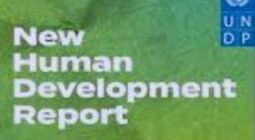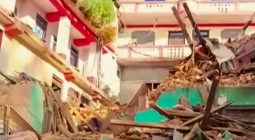Nine persons killed in the landslide occurred at Ghumthang village of Bahrabise-7 in Sindhupalchowk district has been identified by the Area Police Office, Bahrabise.
Police sources added that total 20 persons are still missing in the landslide whereas three persons injured in the incident are receiving treatment at the primary health care center in the district.
A total of 11 houses were damaged in the disaster, Sindhupalchowk District Police office, informed.
Various leaders also expressed grieved over Sindupalchowk landslide disaster.
Municipality offices are working hard to rescue the families hit by the landslides area to safer places.
Speaker of the House of the Representatives, Agni Prasad Sapkota, inspected the landslide hit areas today and pledged immediate support to families affected by the landslide.
Meanwhile, another landslide occurred at Chanaut in Jugal Rural Municipality-4 in the district today morning damaged three houses and injured a local.
Another incident of landslide at Selang, Ward No 1 in the district displaced seven households.
Five persons missing in the landslide at Bhirkharka have been rescued. They were buried in the debris of the landslide.
Landslide is one of the very common natural hazards in the hilly region of Nepal. Both natural and human factors such as steep slopes, fragile geology, high intensity of rainfall, deforestation, unplanned human settlements are the major causes of landslide.
The risk of landslide is further exacerbated by anthropogenic activities like improper land use, encroachment into vulnerable land slopes and unplanned development activities such as construction of roads and irrigation canals without proper protection measures in the vulnerable mountain belt.
Also, flood is a common cause of flood in the rainy season in Nepal, and has been most frequent, highly damaging and wide spread natural hazards. It is estimated that more than 6,000 rivers and rivulets are in Nepal flowing from north to south.
During the monsoon (June-September), these rivers swell and cause damage to the villages, crops lands, and people and livestock remained within the river basins.
Historical data has shown that Nepal witnessed major flood in Tinao basin (1978), Koshi River (1980), Tadi River Basin (1985), Sunkoshi Basin (1987) and devastating cloud burst in Kulekhani area (1993) which alone claimed the lives of 1336 people.









